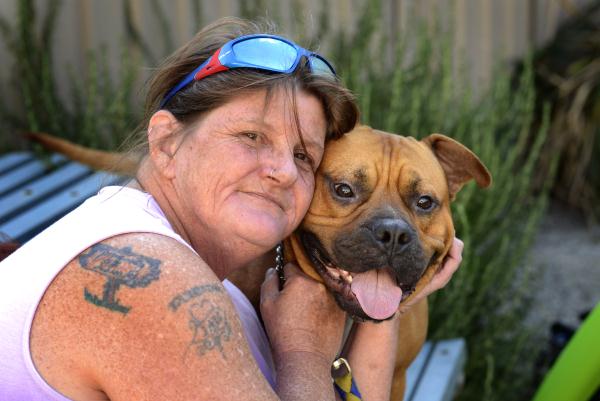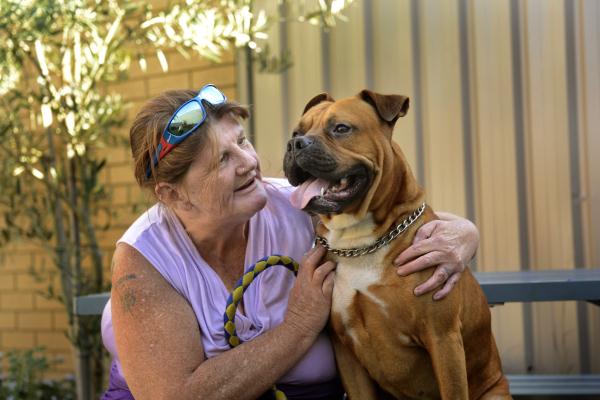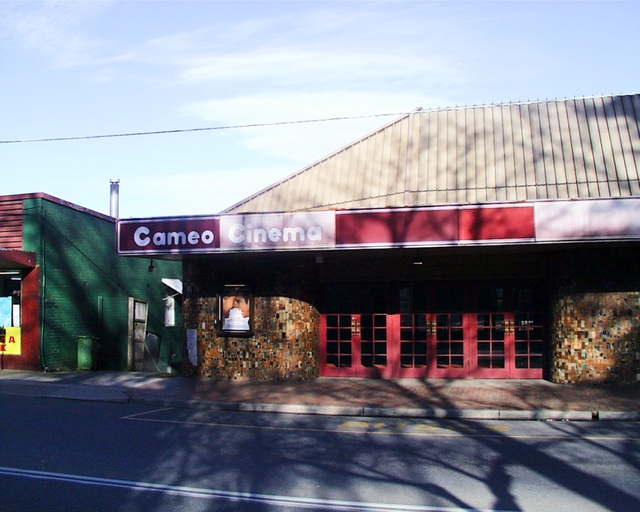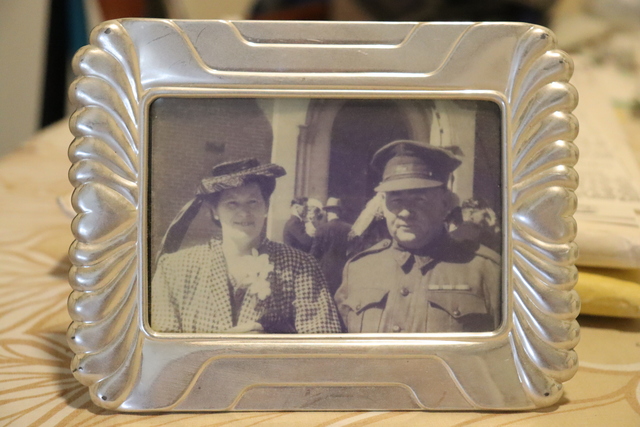By CAM LUCADOU-WELLS
LEE Martin can’t believe at the ripe age of 52 that she’s been without a home for nearly a year.
The grandmother has slept on friends’ couches, in seedy boarding houses and in her car since her private rental unit burnt down in June.
She owes her life to her now 18-month dog Zeus whose barks stirred her awake as the unit and all her possessions caught fire due to faulty ceiling electrics.
“I won’t live anywhere without him,” Ms Martin said.
Few rental landlords will now accept her staying with her loyal companion.
Being on a carer’s pension for looking after her son, she would anyhow struggle to afford the standard $300-plus a week rental prices in Dandenong.
A home under $200 a week – not so uncommon not so long ago – would be more in her price range.
In the past year she’s stayed at two boarding houses.
She left the first because she feared for her safety and the second one “which was actually OK” was condemned.
At the first boarding house, rooms were regularly burgled, electricity went out several times a week and the communal bathroom had used syringes left in it.
Most homeless people she has met are younger than her and substance-affected. She often wonders why she is in this situation.
“No, I can’t see the light at the end of the tunnel,” she said.
“Those getting on in age, they just can’t afford a home. They want to get a job. They don’t choose to be homeless, it can be sometimes circumstances that can’t be controlled.”
She has recently been placed for six weeks at Hanover Welfare Service’s 30-bed crisis facility in Dandenong, with no guarantees of accommodation afterwards.
Hanover Dandenong said it supports more than 240 people in crisis accommodation, about 350 people in the community, and more than 900 people with urgent housing assistance in a year.
The Australian Bureau of Statistics estimates that 1634 people were homeless in Greater Dandenong on the 2011 national census night – the highest in Victoria.
Hanover Welfare Services chief executive Tony Keenan said the crisis has since got worse because of a lack of affordable housing due to Melbourne’s soaring population.
“We can house people in crisis accommodation for a short period of time. It’s hard to place them beyond that.
“Those who are homeless are put on the highest priority for public housing. They still have to wait a couple of years.”
He said his service has reluctantly placed people in “dodgy” rooming houses.
“Services have to choose between the unpalatable and the unbearable.
“Do you put people in a dodgy rooming house or have them sleep in the car?”
What are the solutions?
Mr Keenan said governments need to invest in and create models for private investment into social housing.
To Ms Martin’s eyes, every derelict building looks like a wasted opportunity to get “kids off the street”.
“Actually, that should be any age off the street,” she adds.








